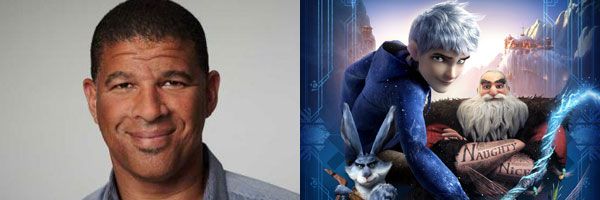With Rise of the Guardians opening this week, I recently got to see the finished film at DreamWorks Animation and it’s really well done. Not only is the animation great to look at, it’s got a strong story that’s character driven and it doesn’t rely on stupid jokes. In addition, unlike most superhero films that spend half the time introducing characters by explaining their origin and showing off their powers, what’s fantastic about Rise of the Guardians is we join almost everyone in the middle of the story. If you’re not familiar with the story, it revolves around the rebellious Jack Frost (Chris Pine) teaming up with other mythical figures North aka Santa Claus (Alec Baldwin), E. Aster Bunnyman aka Easter Bunny (Hugh Jackman), Tooth aka The Tooth Fairy (Isla Fisher), and the Sandman to battle the evil Pitch (Jude Law). Here’s my video blog review and all our previous coverage.To help promote the film, last week I got on the phone with Rise of the Guardians director Peter Ramsey. We talked about how they didn’t tell a typical origin story, the tone, how many times he re-storyboard the film and whether there were any dramatic changes along the way, the test screening process, collaborating with Roger Deakins, other DreamWorks Animation projects like How to Train Your Dragon 2, Kung Fu Panda 3, Trolls (which he said is "kind of partially based on a Terry Pratchett novel") and more. In addition, Ramsey got his start as a storyboard artist working for David Fincher on Fight Club and Steven Spielberg on A.I., so we talked about those projects and a few others. Hit the jump for what he had to say.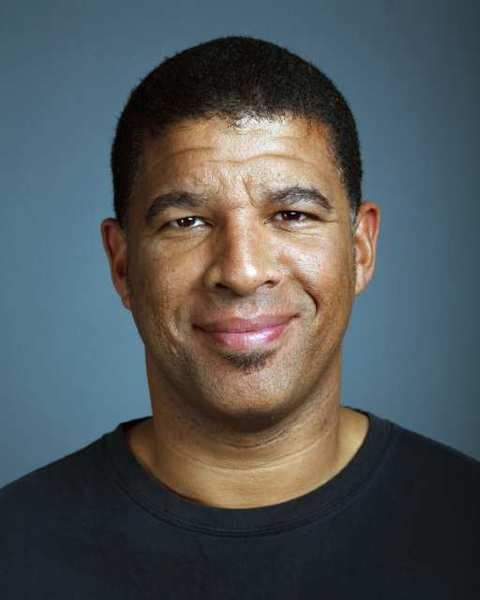 Collider: One of the things I think you did great in this is that we sort of jump in without wasting a lot of time explaining who these characters and the origins; we’re joining everyone sort of mid-adventure. Talk a little bit about whose decision that was to not do an origin story, and was it something that you guys debated?Peter Ramsey: Yeah, you know, it’s interesting the Bill Joyce books that he’s written to this point are all kind of origin stories of the main guardians. So, we knew that this story was going to be about the first time that they all get together, or the most important time they all get together, and there was also going to be this guy who was going to be our gateway character, who was Jack Frost. Once we made the decision to say, “O.K. this is Jack’s story, you know, we’re going to experience all these other guys through him and with him.†Then you know it was kind of like well, then we don’t really- we don’t have the time and frankly there’s no way we could do justice to any of the other guys if we went into all their origins. It would just be impossible. So we opted for this, you know, it’s more of a Star Wars kind of structure where you are dropped into the middle of this larger conflict and you’re following this one, you know, this one kind of reluctant hero through as he interacts with these guys. And they all- all the other characters end up having a reason to be in the movie because of the way they interact with Jack. That turned out to be the most efficient way for us to service them all and still tell the story.One of the other things I really like about the film is that there’s no like fart jokes, there’s no stupid jokes. It’s a serious, but still a really fun movie and I really do think kids are going to love it. Can you sort of talk about that tone, and also just no trying to go for the lowest common denominator, if you will?
Collider: One of the things I think you did great in this is that we sort of jump in without wasting a lot of time explaining who these characters and the origins; we’re joining everyone sort of mid-adventure. Talk a little bit about whose decision that was to not do an origin story, and was it something that you guys debated?Peter Ramsey: Yeah, you know, it’s interesting the Bill Joyce books that he’s written to this point are all kind of origin stories of the main guardians. So, we knew that this story was going to be about the first time that they all get together, or the most important time they all get together, and there was also going to be this guy who was going to be our gateway character, who was Jack Frost. Once we made the decision to say, “O.K. this is Jack’s story, you know, we’re going to experience all these other guys through him and with him.†Then you know it was kind of like well, then we don’t really- we don’t have the time and frankly there’s no way we could do justice to any of the other guys if we went into all their origins. It would just be impossible. So we opted for this, you know, it’s more of a Star Wars kind of structure where you are dropped into the middle of this larger conflict and you’re following this one, you know, this one kind of reluctant hero through as he interacts with these guys. And they all- all the other characters end up having a reason to be in the movie because of the way they interact with Jack. That turned out to be the most efficient way for us to service them all and still tell the story.One of the other things I really like about the film is that there’s no like fart jokes, there’s no stupid jokes. It’s a serious, but still a really fun movie and I really do think kids are going to love it. Can you sort of talk about that tone, and also just no trying to go for the lowest common denominator, if you will?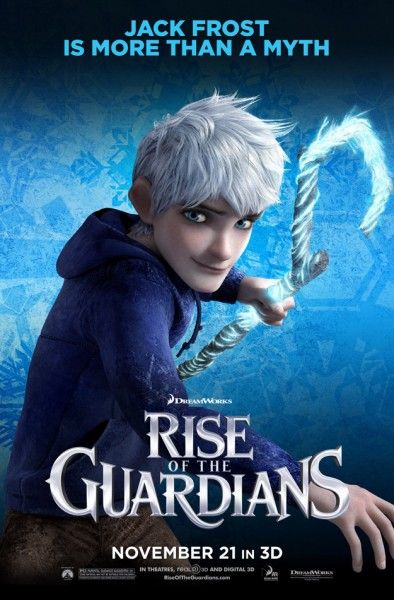 Ramsey: I was initially really skeptical of the idea when I first heard it, and I was just imagining you know, “oh God it’s just going to be an excuse to have these guys on Cheetos bags and Coke,†you know, whatever. I was afraid of that very thing that you know, it’s another one of those, “Oh you’re taking my childhood and then you’re stamping all over it for a quick buck.†And regardless of whether or not these things get marketed to death, and I know they will, but I really felt—and surprisingly the studio and everybody else agreed with me—that yeah we didn’t want to do a parody or satire, or we didn’t want it to be super topical; we didn’t want Twitter jokes and all that stuff because we wanted it to be timeless. The thing that really drew me to the project was the idea that when you’re a kid you actually do believe in these guys. It’s not even like Luke Skywalker or Batman, Santa Claus is a real person who puts something under your tree that you wrote him a letter and ask him for. So the emotional connection you have, I think, is so strong and so deep and stays with you way longer than you think it actually does, that was the really intriguing thing to me. Everything about the movie we kind of built on top of that this idea that they’re real and were not going to screw around with that and not take it seriously because many people do. That was our guiding light.Often on animated projects, because you guys are doing this for years, you know you’ll come up with your thing, you’ll story board it, you’ll realize the sequence doesn’t work and you’ll redo it. I’m just curious how many times did you re-storyboard the film and were there any dramatic changes along the way?Ramsey: In answer to the question how many times- dozens of times, dozens and dozens and dozens. We’ll go through version after version after version of scenes. We’ll throw things that will come back six, eight months later, a year later. We’ll revert to an earlier version we’ve done, we’ll cannibalize something from an earlier version of the scene. So they get worked over time after time. We’re basically screening versions of the movie every few months, and that in front of an audience of people, so they kind of get raked over the coals again and again. What was the second part of the question one more time?
Ramsey: I was initially really skeptical of the idea when I first heard it, and I was just imagining you know, “oh God it’s just going to be an excuse to have these guys on Cheetos bags and Coke,†you know, whatever. I was afraid of that very thing that you know, it’s another one of those, “Oh you’re taking my childhood and then you’re stamping all over it for a quick buck.†And regardless of whether or not these things get marketed to death, and I know they will, but I really felt—and surprisingly the studio and everybody else agreed with me—that yeah we didn’t want to do a parody or satire, or we didn’t want it to be super topical; we didn’t want Twitter jokes and all that stuff because we wanted it to be timeless. The thing that really drew me to the project was the idea that when you’re a kid you actually do believe in these guys. It’s not even like Luke Skywalker or Batman, Santa Claus is a real person who puts something under your tree that you wrote him a letter and ask him for. So the emotional connection you have, I think, is so strong and so deep and stays with you way longer than you think it actually does, that was the really intriguing thing to me. Everything about the movie we kind of built on top of that this idea that they’re real and were not going to screw around with that and not take it seriously because many people do. That was our guiding light.Often on animated projects, because you guys are doing this for years, you know you’ll come up with your thing, you’ll story board it, you’ll realize the sequence doesn’t work and you’ll redo it. I’m just curious how many times did you re-storyboard the film and were there any dramatic changes along the way?Ramsey: In answer to the question how many times- dozens of times, dozens and dozens and dozens. We’ll go through version after version after version of scenes. We’ll throw things that will come back six, eight months later, a year later. We’ll revert to an earlier version we’ve done, we’ll cannibalize something from an earlier version of the scene. So they get worked over time after time. We’re basically screening versions of the movie every few months, and that in front of an audience of people, so they kind of get raked over the coals again and again. What was the second part of the question one more time?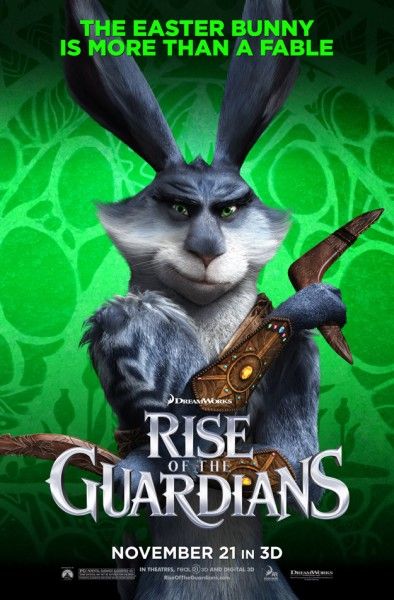 I was curious if anything dramatically changed along the production process.Ramsey: Yeah, yeah. We had been working on it for probably about eight months, and with a pretty different structure, a different way of bringing Pitch into the story and stuff like that, and we were feeling like “Ah, you know it’s not really working, we need to do a big re-think.†We were getting started on that and it was right around the time that Guillermo signed on as an executive producer, because we showed him what we had and he agreed with us that, “Yeah, you know, there’s a lot of different things we can do to get into this movie in a different way.†So the first thing we really did with Guillermo when he came on board was to work on a big restructure of the movie to kind of energize the villain story line in a different way. So that was the single biggest change. And then once we did that we didn’t have a lot of huge changes because we worked that until we were on pretty solid ground. Can you talk about what you learned in the first test screening and what possibly changed as a result of it? Or what you worked on as a result of it?Ramsey: Right, well there’s different ones, there’s our internal test screenings when we’re showing things to you know Katzenberg and development people with the studio and stuff like that, and we’ll get all their notes you know they’ll give us their notes, and we’ll realize for ourselves parts of the movie that just aren’t working or we’re there yet. But if we’re talking about audience previews, the first audience preview we showed, I think we showed and we had basically 3/4 of the movie done. So we showed them stuff that still had unlit animation, big chunks of storyboards, stuff like that, still some scratched voices and whatnot. I think the biggest things we took away from that were that—I think our ending mutated a little bit in that the amount that the kids participated in was a little heavier in our earlier versions versus what we ended up with, which was more of a—people really wanted to see The Guardians kind of kick a little more butt, you know? So we ended up beefing that up a little it. But I think that was probably the most substantial change we made, and honestly it’s someplace we were going to anyway. It was just, you know, with these screenings a lot of times you can never get everything done you want to do in a particular iteration. So you always end up lagging behind a little. But that was the biggest change I can remember.
I was curious if anything dramatically changed along the production process.Ramsey: Yeah, yeah. We had been working on it for probably about eight months, and with a pretty different structure, a different way of bringing Pitch into the story and stuff like that, and we were feeling like “Ah, you know it’s not really working, we need to do a big re-think.†We were getting started on that and it was right around the time that Guillermo signed on as an executive producer, because we showed him what we had and he agreed with us that, “Yeah, you know, there’s a lot of different things we can do to get into this movie in a different way.†So the first thing we really did with Guillermo when he came on board was to work on a big restructure of the movie to kind of energize the villain story line in a different way. So that was the single biggest change. And then once we did that we didn’t have a lot of huge changes because we worked that until we were on pretty solid ground. Can you talk about what you learned in the first test screening and what possibly changed as a result of it? Or what you worked on as a result of it?Ramsey: Right, well there’s different ones, there’s our internal test screenings when we’re showing things to you know Katzenberg and development people with the studio and stuff like that, and we’ll get all their notes you know they’ll give us their notes, and we’ll realize for ourselves parts of the movie that just aren’t working or we’re there yet. But if we’re talking about audience previews, the first audience preview we showed, I think we showed and we had basically 3/4 of the movie done. So we showed them stuff that still had unlit animation, big chunks of storyboards, stuff like that, still some scratched voices and whatnot. I think the biggest things we took away from that were that—I think our ending mutated a little bit in that the amount that the kids participated in was a little heavier in our earlier versions versus what we ended up with, which was more of a—people really wanted to see The Guardians kind of kick a little more butt, you know? So we ended up beefing that up a little it. But I think that was probably the most substantial change we made, and honestly it’s someplace we were going to anyway. It was just, you know, with these screenings a lot of times you can never get everything done you want to do in a particular iteration. So you always end up lagging behind a little. But that was the biggest change I can remember.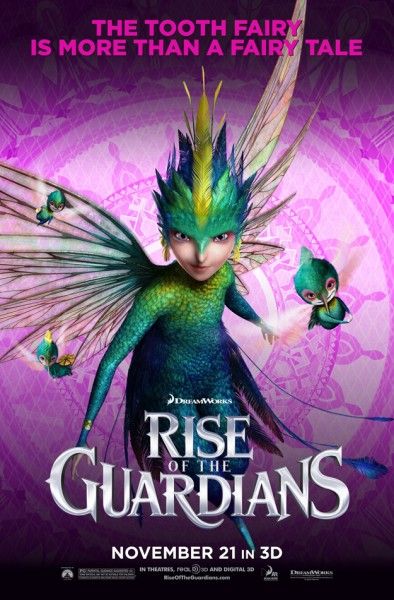 I know Roger Deakins is someone who is working with DreamWorks to help with lighting and stuff like that. Were you able to collaborate at all with Roger on this project, and what did you bring to the table if you did?Ramsey: Yeah, yeah we were. Roger worked with us quite a bit and it was, talk about a dream come true, man. He’s an absolute genius. We were going for a pretty sophisticated, “real†look with our lighting, and Roger, you know, he was able to help us really ground it. And we had good guys, you know, our head of visual effects David Prescott had a team of lighters that were really already kind of pushing the boundaries as far as the look went for our movie. Roger would just come in with these additional insights and real just—he’s a master of color and how to use contrast, all the counter-intuitive visual tricks that you’d use to get a different effect on this stuff, and he loves it. He’s an absolute workaholic who, I think, he really loves the idea of lighting in animation because in a way you can almost do anything, you know? You have freedom to kind of tweak and to explore possibilities that you don’t have when you’re limited with the light that you have on the set. So I was kind of amazed by how much he was really into it. God he brought things like, just subtle things sometimes, you know, like enhance the light a little brighter, tweak the depth of field here. Yeah, I was just sorry that he had to leave part way through to work on Skyfall. So we didn’t have him every single minute of every single day, but he brought so much to the look and feel of the movie.I’m just curious about the collaboration with him a little bit more, is it something where he comes in and looks at something for two or three hours? Was it one of these things that he’s in a lot, was he looking at it every few months?Ramsey: No, when he was available to us he was actually in a lot. I know our initial, our color keys and our references he did a lot of the selecting of photographic reference for, you know- “The dream set could have this kind of feel.†And he’d have a photo reference that he dug up of lava, or fire-dancers, or whatever photo reference he would find. He was digging up images and throwing ideas at us for how we might want to treat something for colors. So all that went into our plan of how we were going to light these, each individual set and each individual sequence. When he was away on the road he would check in online with stills from what the lighting guys were doing and he’d give his notes. He’d give note on sequences that were, you know, animated sequences that were being lit so we’d send him a little QuickTime file and he’d give us his notes and say like, “You know, I think we could use a little more bounce light here. Over all I think the sequence is playing a little flat. I think we could saturate this a little more and up the contrast here. The left side of Jack’s face here could use some fill.†I mean really detailed, like real DP notes. So it was- his involvement was pretty intensive, it was great.Was there ever a moment where you were like, “Roger, you’re wrong.†Or was it always like, “Roger, sounds good.â€?Ramsey: Yeah, you know what there were some times where I was like, “Ehhh?†Once in a blue moon there was something. But a lot of times I would think that, and then I would see where he was really going and be like, “Oh, no I’m wrong. You’re a genius.†It was honestly mostly that. He was also, you know, we had a great back and forth. I would tell him what I was looking for and I’d sometimes I’d, you know, I got my courage up and I’d go, “What if we added a little more fill here?†and he’d kind of stroke his chin, “Yeah, yeah, I could see that. I could see that.†And then he’d go, “what about if we did this?†and then he’d take my idea and make it 500% better with like, a flick of his wrist. It was a dream; it was just an absolute dream. Especially those little moments when I’d be looking at something and id be thinking in my head, “I bet if we made that part of the frame a little more contrast-y, that other thing would pop.†And then he’d go, “Yeah, why don’t we make that a little contrast-y.†and then you know, like one tear would trickle down my face, “You’re my hero, you’re my god.â€Yeah, I can only imagine.Ramsey: Yeah, man, it’s a dream, I got to tell you.His cinematography is just ludicrous. You have a history of being a storyboard artist and you’ve worked on a lot of movies. I definitely want to ask you about two specific ones. Back in, I guess it was ‘98 into ‘99, you worked on Being John Malkovich and Fight Club, so you worked with Spike Jonze and David Fincher.Ramsey: Spike Jonze, yeah, and David Fincher back to back.Yeah, totally. What was the collaboration like? What was it like doing storyboard artist stuff? Was it something where you’re doing it and then you would presenting it to the director? Can you talk about what that environment is like and working on those two projects?Ramsey: Yeah, you know, both of those guys and both of those projects were both pretty intensive, hands on working with David and Spike. Actually I think David recommended me to Spike is what happened. But, with David on Fight Club he had seen samples of my work so he knew I could kind of deliver the image quality that he liked. But basically we sat next to each other on Fight Club and he would scribble out little thumb nails, and I was there kind of doing my slightly more refined scribble as my notes as he was going. And we kind of blocked it all that way for the first 2/3 of my work on that film, and then by that time he kind of knew me and he began to trust me more. And he would say like, “You know what?  come up with some stuff for this stuff that takes place at the airport, we need some stuff for jets.†It was almost like I became his little second unit story board director. So he’d let me kind of run wild and come up with stuff and he’d give the thumbs up or thumbs down. But it was a very, really close, really close working hands on. I also did Panic Room with Fincher, and by the time we did that he trusted me enough that he’d say, “Okay here, take this scene and come up with some stuff. Just make sure, I want to hit this, that and the other thing, but you know see what you come up with.†And he’d let me kind of run, and once again it was like, “Oh yeah, this really works, but for his change this close up to this, and why don’t we combine these two shots.†And that kind of thing. It really, with any storyboard artist and any director I think it kind of depends on the relationship you have with the director and how much trust they have with you.
I know Roger Deakins is someone who is working with DreamWorks to help with lighting and stuff like that. Were you able to collaborate at all with Roger on this project, and what did you bring to the table if you did?Ramsey: Yeah, yeah we were. Roger worked with us quite a bit and it was, talk about a dream come true, man. He’s an absolute genius. We were going for a pretty sophisticated, “real†look with our lighting, and Roger, you know, he was able to help us really ground it. And we had good guys, you know, our head of visual effects David Prescott had a team of lighters that were really already kind of pushing the boundaries as far as the look went for our movie. Roger would just come in with these additional insights and real just—he’s a master of color and how to use contrast, all the counter-intuitive visual tricks that you’d use to get a different effect on this stuff, and he loves it. He’s an absolute workaholic who, I think, he really loves the idea of lighting in animation because in a way you can almost do anything, you know? You have freedom to kind of tweak and to explore possibilities that you don’t have when you’re limited with the light that you have on the set. So I was kind of amazed by how much he was really into it. God he brought things like, just subtle things sometimes, you know, like enhance the light a little brighter, tweak the depth of field here. Yeah, I was just sorry that he had to leave part way through to work on Skyfall. So we didn’t have him every single minute of every single day, but he brought so much to the look and feel of the movie.I’m just curious about the collaboration with him a little bit more, is it something where he comes in and looks at something for two or three hours? Was it one of these things that he’s in a lot, was he looking at it every few months?Ramsey: No, when he was available to us he was actually in a lot. I know our initial, our color keys and our references he did a lot of the selecting of photographic reference for, you know- “The dream set could have this kind of feel.†And he’d have a photo reference that he dug up of lava, or fire-dancers, or whatever photo reference he would find. He was digging up images and throwing ideas at us for how we might want to treat something for colors. So all that went into our plan of how we were going to light these, each individual set and each individual sequence. When he was away on the road he would check in online with stills from what the lighting guys were doing and he’d give his notes. He’d give note on sequences that were, you know, animated sequences that were being lit so we’d send him a little QuickTime file and he’d give us his notes and say like, “You know, I think we could use a little more bounce light here. Over all I think the sequence is playing a little flat. I think we could saturate this a little more and up the contrast here. The left side of Jack’s face here could use some fill.†I mean really detailed, like real DP notes. So it was- his involvement was pretty intensive, it was great.Was there ever a moment where you were like, “Roger, you’re wrong.†Or was it always like, “Roger, sounds good.â€?Ramsey: Yeah, you know what there were some times where I was like, “Ehhh?†Once in a blue moon there was something. But a lot of times I would think that, and then I would see where he was really going and be like, “Oh, no I’m wrong. You’re a genius.†It was honestly mostly that. He was also, you know, we had a great back and forth. I would tell him what I was looking for and I’d sometimes I’d, you know, I got my courage up and I’d go, “What if we added a little more fill here?†and he’d kind of stroke his chin, “Yeah, yeah, I could see that. I could see that.†And then he’d go, “what about if we did this?†and then he’d take my idea and make it 500% better with like, a flick of his wrist. It was a dream; it was just an absolute dream. Especially those little moments when I’d be looking at something and id be thinking in my head, “I bet if we made that part of the frame a little more contrast-y, that other thing would pop.†And then he’d go, “Yeah, why don’t we make that a little contrast-y.†and then you know, like one tear would trickle down my face, “You’re my hero, you’re my god.â€Yeah, I can only imagine.Ramsey: Yeah, man, it’s a dream, I got to tell you.His cinematography is just ludicrous. You have a history of being a storyboard artist and you’ve worked on a lot of movies. I definitely want to ask you about two specific ones. Back in, I guess it was ‘98 into ‘99, you worked on Being John Malkovich and Fight Club, so you worked with Spike Jonze and David Fincher.Ramsey: Spike Jonze, yeah, and David Fincher back to back.Yeah, totally. What was the collaboration like? What was it like doing storyboard artist stuff? Was it something where you’re doing it and then you would presenting it to the director? Can you talk about what that environment is like and working on those two projects?Ramsey: Yeah, you know, both of those guys and both of those projects were both pretty intensive, hands on working with David and Spike. Actually I think David recommended me to Spike is what happened. But, with David on Fight Club he had seen samples of my work so he knew I could kind of deliver the image quality that he liked. But basically we sat next to each other on Fight Club and he would scribble out little thumb nails, and I was there kind of doing my slightly more refined scribble as my notes as he was going. And we kind of blocked it all that way for the first 2/3 of my work on that film, and then by that time he kind of knew me and he began to trust me more. And he would say like, “You know what?  come up with some stuff for this stuff that takes place at the airport, we need some stuff for jets.†It was almost like I became his little second unit story board director. So he’d let me kind of run wild and come up with stuff and he’d give the thumbs up or thumbs down. But it was a very, really close, really close working hands on. I also did Panic Room with Fincher, and by the time we did that he trusted me enough that he’d say, “Okay here, take this scene and come up with some stuff. Just make sure, I want to hit this, that and the other thing, but you know see what you come up with.†And he’d let me kind of run, and once again it was like, “Oh yeah, this really works, but for his change this close up to this, and why don’t we combine these two shots.†And that kind of thing. It really, with any storyboard artist and any director I think it kind of depends on the relationship you have with the director and how much trust they have with you.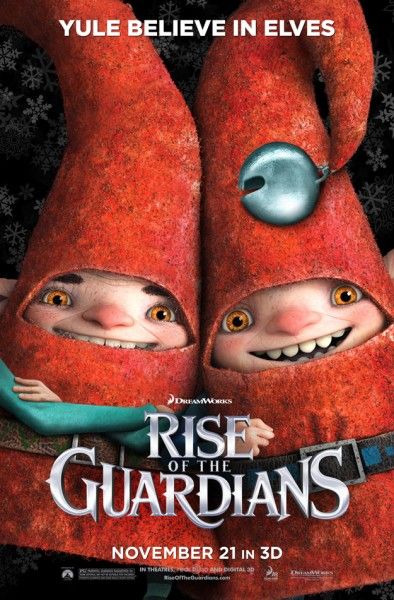 Also between Panic Room and Fight Club, you did Cast Away, A.I., you a whole bunch of things, I’m just curious with these big directors how much are they using the storyboard in the final shot? How much is it being figured out on set? I’m just curious about that dynamic.Ramsey: It depends. Curiously on both of those films, A.I. and Cast Away, the bulk of the work that I did was stuff that the second unit shot. And on both of those movies it was like, almost shot for shot what I ended up doing. Because someone like Spielberg, you know, he’s going to do his—he gets on the set he doesn’t want anybody telling him what he’s going to do. But they want something clear and concise when other people are shooting their second unit stuff. So those sequences I did for both of those movies, I was actually kind of shocked when O saw them on screen because they were so close to what I’d come up with. And I had a brief conversation with Spielberg on the A.I. stuff I did for him. And there actually was one sequence on A.I. that, just like Fincher, I sat next to Spielberg and he drew it out for me and gave me his little thumbnail scribbles which I still have someplace.I definitely want to ask a broad question about DreamWorks Animation. When I talked to Del Toro earlier he mentioned you know he’s been working on Kung Fu Panda 3 and the sequel to Puss in Boots. I imagine being in the heart of what’s going on, you’ve seen some of the other stuff that’s coming up. What are you excited for that they’re working on right now?
Also between Panic Room and Fight Club, you did Cast Away, A.I., you a whole bunch of things, I’m just curious with these big directors how much are they using the storyboard in the final shot? How much is it being figured out on set? I’m just curious about that dynamic.Ramsey: It depends. Curiously on both of those films, A.I. and Cast Away, the bulk of the work that I did was stuff that the second unit shot. And on both of those movies it was like, almost shot for shot what I ended up doing. Because someone like Spielberg, you know, he’s going to do his—he gets on the set he doesn’t want anybody telling him what he’s going to do. But they want something clear and concise when other people are shooting their second unit stuff. So those sequences I did for both of those movies, I was actually kind of shocked when O saw them on screen because they were so close to what I’d come up with. And I had a brief conversation with Spielberg on the A.I. stuff I did for him. And there actually was one sequence on A.I. that, just like Fincher, I sat next to Spielberg and he drew it out for me and gave me his little thumbnail scribbles which I still have someplace.I definitely want to ask a broad question about DreamWorks Animation. When I talked to Del Toro earlier he mentioned you know he’s been working on Kung Fu Panda 3 and the sequel to Puss in Boots. I imagine being in the heart of what’s going on, you’ve seen some of the other stuff that’s coming up. What are you excited for that they’re working on right now?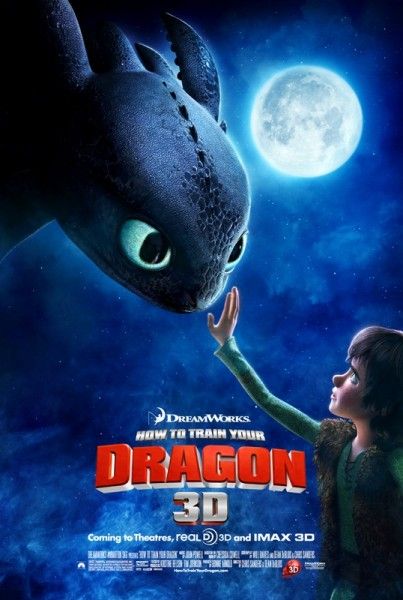 Ramsey: I got to see one of the early, early cuts of How to Train your Dragon 2.Yeah, that’s something I’m tremendously looking forward to.Ramsey: That’s going to be magnificent. I think people are going to be absolutely blown away by just the scope of it and the tone and the nature of the story. It’s going to knock people out. And then there’s super fun stuff, there’s a project Me and My Shadow that I think is going to be really fun, it kind of combines 3D and 2D. I haven’t seen much, I haven’t seen anything really on Kung Fu Panda 3, they’re so early, early days but I’m hoping that’s going to be really cool and really fun. I love those movies. And I’m trying to think of what else. There’s an interesting project called, right now it’s called Trolls, and it’s kind of partially based on a Terry Pratchett novel. Anand Tucker, another live action director is directing. That’s another one that seems like it’s going to be really interesting and really different for the studio. There’s some cool stuff going on there.I definitely want to do a follow up on How to Train your Dragon because I loved the first one, and I think that the cinematography in it- I believe that’s the first one that Roger Deakins helped out on.Ramsey: Yeah, it is, and I’m sure on this one they’re going to push it way further because it’s pretty magnificent looking.I guess I just wanted to know how you think it compares to the first one in terms of tone and scope.Ramsey: From what I’ve seen like much, much more massive it’s like, it’s an unfolding epic and it gets really big. In terms of tone, there’s a more serious undertone and family drama in this one and it’s definitely an evolution of all the characters.For all our Rise of the Guardians coverage click here.
Ramsey: I got to see one of the early, early cuts of How to Train your Dragon 2.Yeah, that’s something I’m tremendously looking forward to.Ramsey: That’s going to be magnificent. I think people are going to be absolutely blown away by just the scope of it and the tone and the nature of the story. It’s going to knock people out. And then there’s super fun stuff, there’s a project Me and My Shadow that I think is going to be really fun, it kind of combines 3D and 2D. I haven’t seen much, I haven’t seen anything really on Kung Fu Panda 3, they’re so early, early days but I’m hoping that’s going to be really cool and really fun. I love those movies. And I’m trying to think of what else. There’s an interesting project called, right now it’s called Trolls, and it’s kind of partially based on a Terry Pratchett novel. Anand Tucker, another live action director is directing. That’s another one that seems like it’s going to be really interesting and really different for the studio. There’s some cool stuff going on there.I definitely want to do a follow up on How to Train your Dragon because I loved the first one, and I think that the cinematography in it- I believe that’s the first one that Roger Deakins helped out on.Ramsey: Yeah, it is, and I’m sure on this one they’re going to push it way further because it’s pretty magnificent looking.I guess I just wanted to know how you think it compares to the first one in terms of tone and scope.Ramsey: From what I’ve seen like much, much more massive it’s like, it’s an unfolding epic and it gets really big. In terms of tone, there’s a more serious undertone and family drama in this one and it’s definitely an evolution of all the characters.For all our Rise of the Guardians coverage click here.

